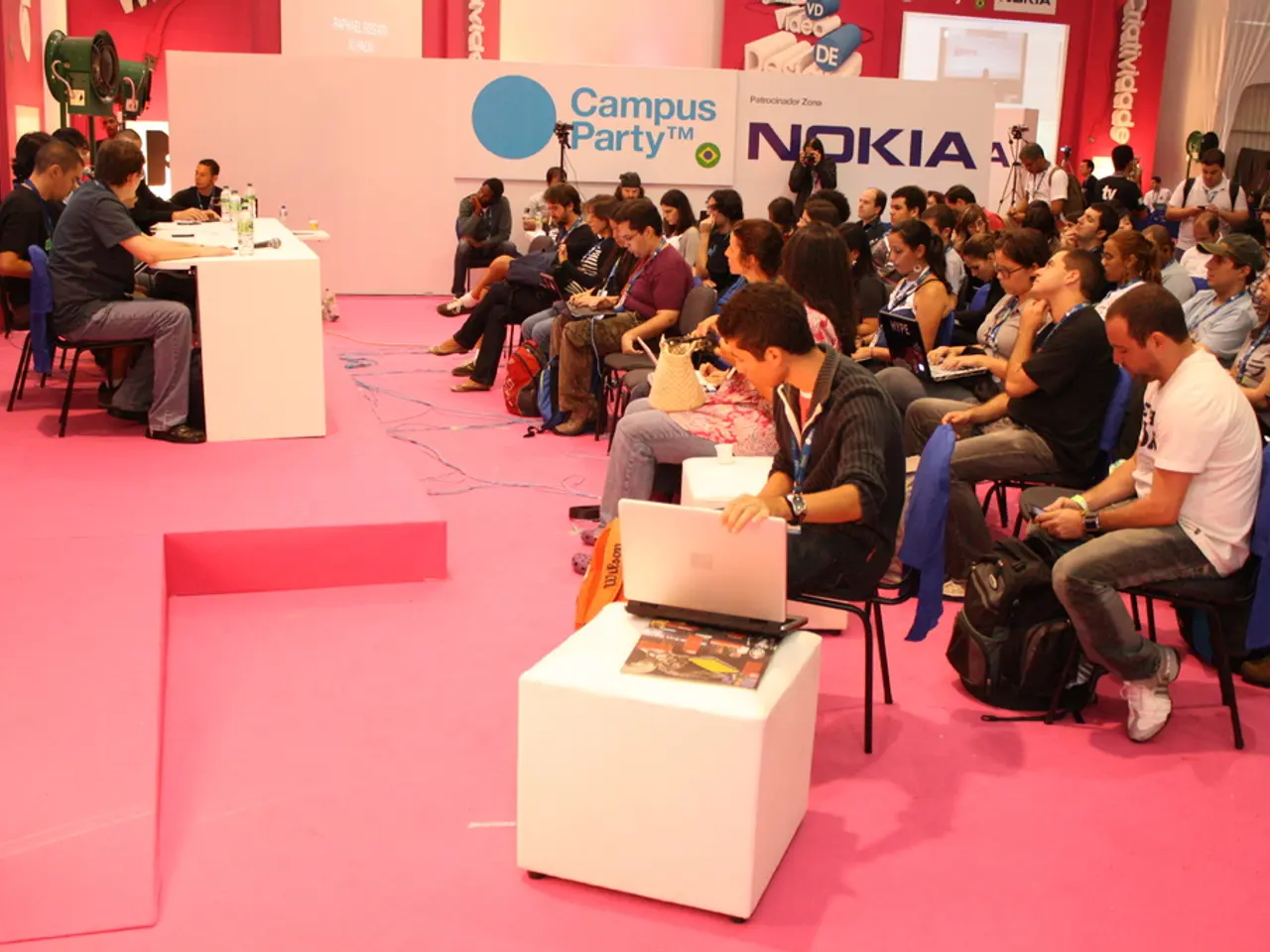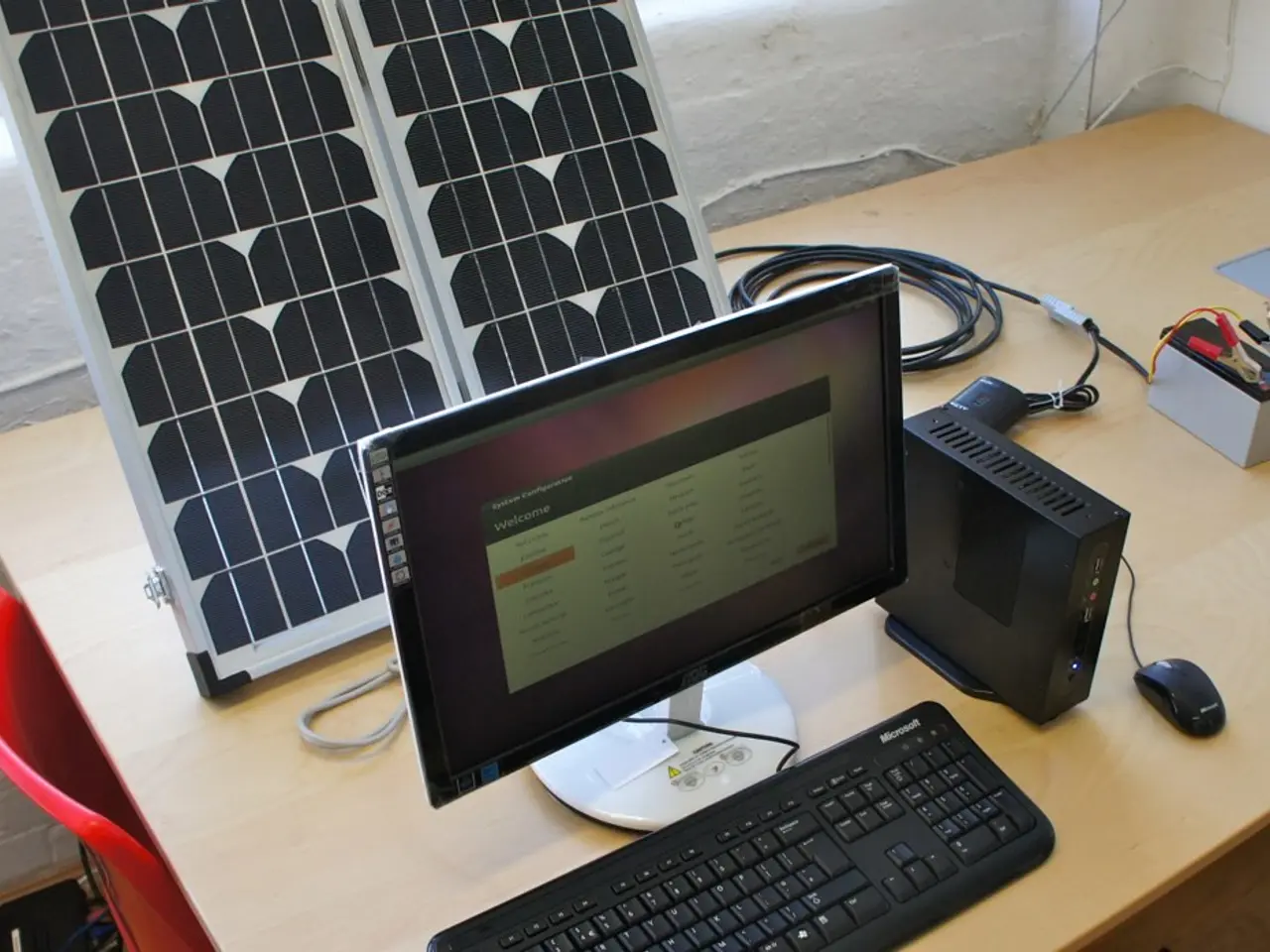Lithium Hydroxide Extraction from Used Batteries: A Collaborative Effort Between Syensqo and "cylib"
In a significant breakthrough for the electric vehicle (EV) industry, the Aachen-based recycling company "cylib" and Belgian chemical group Syensqo have joined forces to develop a novel method for recovering lithium from used EV batteries. This innovative approach could potentially contribute to sustainable lithium recovery and lower costs associated with the process.
The procedure developed by the two companies allows for the simultaneous processing of various cell chemistries, such as NMC and LFP, on a single production line. This simultaneous processing is intended to simplify process control and potentially increase the efficiency of lithium recovery.
Syensqo developed the extraction agent used in the process, which is characterised by its high selectivity for lithium. The technology does not specify the exact extracting agent used, but it is assumed to be CYANEX® 936P, a proprietary solvent extractant developed by Syensqo and its engineering partner Tenova Advanced Technologies. This solvent extractant is noted for its exceptional lithium selectivity and is applied in the innovative solvent extraction process combined with Cylib's hydrometallurgical treatment.
The companies have combined hydrometallurgical process from Cylib with solution extraction technology from Syensqo for the lithium recovery process. After the simultaneous processing, further process steps, such as purification and crystallization, were carried out to convert the end product to battery-grade lithium hydroxide. This lithium hydroxide meets the purity requirements of leading cathode material manufacturers.
The success of this method could potentially contribute to the sustainable recovery of lithium from used EV batteries. Moreover, the development of this method could potentially lower the costs associated with lithium extraction from used EV batteries. Furthermore, the procedure is claimed to reduce investment costs, making it a cost-effective solution for lithium recovery.
The technology developed by Cylib and Syensqo aims to address the regulatory imperatives of the European Union. The EU requires at least 50 percent of the lithium content to be recovered from battery waste by the end of 2027, increasing to at least 80 percent by the end of 2031. This method could play a crucial role in meeting these targets and promoting a more sustainable EV industry.
The simplification of process control could potentially lead to improved consistency in lithium recovery from used EV batteries, ensuring a reliable supply of lithium for the EV industry. This development is a significant step towards a more sustainable and cost-effective lithium recovery process, benefiting both the environment and the EV industry.
This collaboration between cylib and Syensqo has led to the development of a technology that integrates hydrometallurgical process from cylib with solution extraction technology from Syensqo, specifically using CYANEX® 936P, a proprietary solvent extractant. This technology, notable for its exceptional lithium selectivity, is designed to simplify process control, potentially increase the efficiency of lithium recovery, and reduce investment costs, making it a cost-effective solution for lithium recovery. As the EU mandates 50% lithium recovery from battery waste by 2027, rising to 80% by 2031, this method could significantly contribute to a more sustainable and cost-effective EV industry, benefiting both the environment and technology-driven finance for the environmental-science sector.




